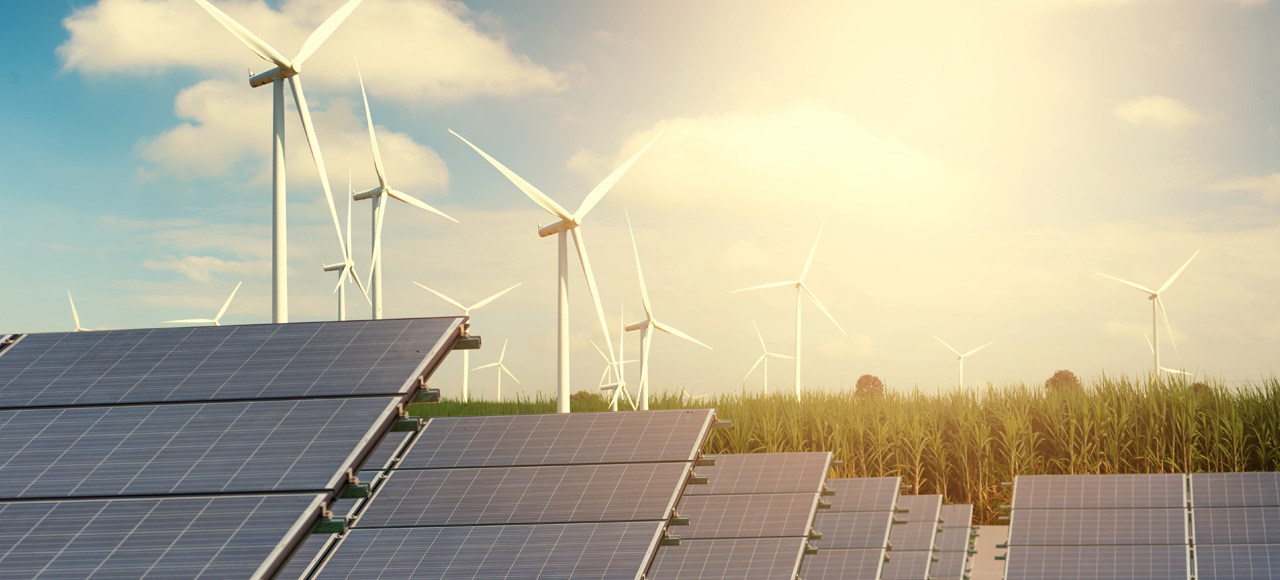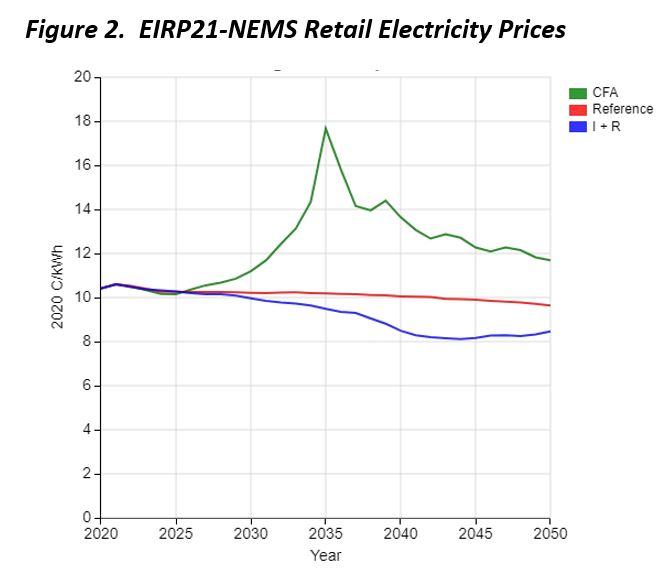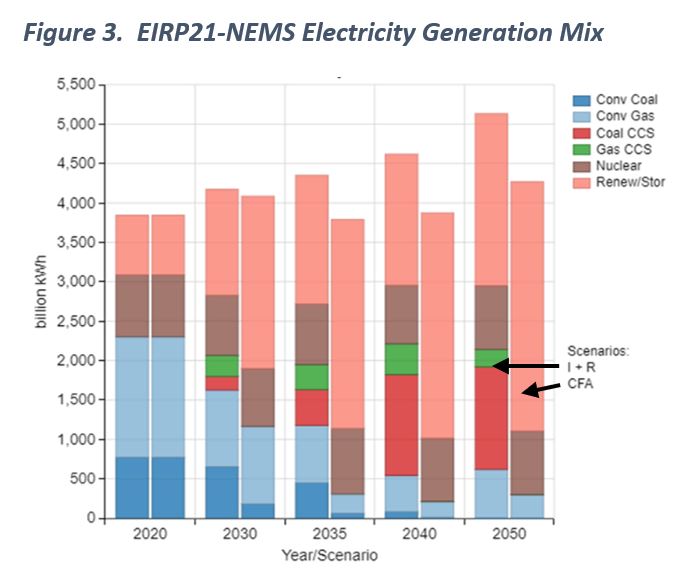
An Innovative Approach to Achieving a Clean Energy Future
Over the past several years, the Energy Innovation Reform Project(EIRP) has developed and promoted an Innovation + Regulation Policy Framework (I+R) for decarbonizing the U.S. electric power sector. OnLocation, Inc. completed a comprehensive modeling analysis for EIRP to identify the potential benefits and challenges of employing the I+R Framework. The study found that the I+R Framework is more cost-effective and results in greater diversity of generation options, including more firm and dispatchable clean power, than the alternative regulation-only clean energy policy examined.
The I+R Framework calls for a phased approach of increasing government investment in technology innovation followed by implementation of a Clean Electricity Standard (CES) to achieve significant reductions in power sector CO2 emissions through 2050 and beyond. This framework provided the basis for the bipartisan McKinley-Schrader Clean Energy Future Through Innovation Act (CEFTIA) bill introduced in the House of Representatives in June 2021 by Congressmen David McKinley (R-WV) and Kurt Schrader (D-OR). The OnLocation analysis explores the potential impact of the I+R Framework and compares this approach with another recent clean energy policy proposal, the CLEAN Future Act (CFA)’s Clean Energy Standard, introduced in the House of Representatives in March 2021 by Congressman Frank Pallone, Jr. (D-NJ), chairman of the House Energy & Commerce Committee.
For this analysis, OnLocation developed the EIRP21-NEMS model, a modified version of the U.S. Energy Information Administration’s National Energy Modeling System used to generate projections for the Annual Energy Outlook 2021. Several scenarios were analyzed using EIRP21-NEMS to compare the relative environmental and economic benefits and costs of the I+R and CFA Policies. OnLocation also included the potential impact of the Infrastructure Investment and Jobs Act (IIJA)’s prescribed new investments in the electric power sector for comparison with the I+R Policy.
The OnLocation analysis revealed four key findings:
Innovation alone can achieve significant CO2 mitigation, but long-term goals are unlikely to be met after policy incentives expire. Our analysis shows that the proposed innovation measures alone would achieve the policy goal of 80% below 2022 levels of CO2 emissions in the power sector before the target year of 2050. An Innovation-only policy assumes that most of the policy incentives phase out by 2040, and without these incentives in place, CO2 emissions are expected to rise after this phase-out period. However, in the full I+R Policy, the CES regulation component of the policy would be implemented before the incentives expire, providing continued policy support for carbon-free technologies to ensure that the emissions goal continues to be met through 2050 and beyond, as shown in Figure 1.
 Clean Electricity Standard reduces CO<sub>2</sub> emissions more rapidly and results in lower emissions than the I+R Policy in the power sector. However, because the CFA does not include federal policies and incentives designed to accelerate innovation prior to imposing regulatory standards, compliance costs of power suppliers rise significantly, leading to higher energy prices for consumers, as shown in Figure 2, and higher overall power system costs compared to the more cost-effective I+R Policy.<strong><span style=)

The I+R Policy incentivizes a more diverse portfolio of carbon-free generation. Renewable technologies and electricity storage play an important role in meeting clean electricity goals, but with a combination of technology policy incentives and investments in innovation, emerging dispatchable technologies such as Allam-cycle carbon capture may provide cost-effective alternatives for meeting these goals. In contrast, the CFA policy provides very little incentive for fossil fuel technologies with carbon capture; virtually all the CES credits for fossil technologies phase out after 2035. The result is greater reliance on variable renewable generation, such as wind and solar that, may reduce system reliability over time. The I+R Policy uses more technology-neutral incentives in recognition of the need for a diverse portfolio including firm and dispatchable clean power to meet CO2 mitigation goals, as shown in Figure 3.

The Infrastructure Investment and Jobs Act (IIJA) power sector subsidies will reduce emissions slightly but fall far short of meeting I+R Policy goals. While some federal spending in the Infrastructure Act aligns with I+R goals, the resulting impacts of the IIJA provisions, including CO2 reductions and infrastructure improvements, are very limited and do not continue beyond 2030. Our analysis shows that the IIJA nuclear subsidies are successful in preventing a few at-risk plants from retiring, and subsidies for carbon capture and storage (CCUS) infrastructure reduce the cost of deployment for a few fossil CCUS power plants prior to 2030, but additional I+R policies are needed to achieve significant CCUS deployment levels and an improved power infrastructure for meeting long-term CO2 reduction goals.
Given the recent Supreme Court decision (West Virginia v. EPA) that restricts the Environmental Protection Agency’s authority under the Clean Air Act to regulate power and industrial sector emissions, more attention is turning to other regulatory and policy options to mitigate greenhouse gases. While the two primary policies included in this analysis, EIRP’s Innovation + Regulation Framework and the CLEAN Future Act’s Clean Energy Standard, both employ versions of a national clean electricity standard that are defined in different ways, the I+R Policy combines this standard with complementary technology innovation policies that reduce the cost of compliance, result in a more diverse mix of clean electricity generation sources, and ensure that significant long-term CO2 reductions are achieved through 2050 and beyond.

